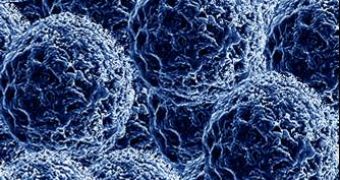Nano-particles can indeed breach our skin under certain conditions, including prolonged ultraviolet light exposure, new studies have showed. This happens because the proteins that normally make the human skin impenetrable to but a few outside chemicals loosen it, while cells grow after exposed to Sun light. Scientists believe that this happens because the skin proliferates more cells in the presence of direct light than in normal circumstances.
Nano-particles are very tiny particles, some as small as 10 nanometers. Considering a nanometer is about one millionth of a millimeter, biologists say that they are almost the same size as the natural gaps that exist between the cells of our skin.
Although the latest study, headed by chemist Lisa DeLouise, Ph.D, has showed that skin can be breached by nano-particles under most circumstances, the highest percentages of particle breakthroughs were recorded on skin damaged by UV light. Apparently, when proteins binding skin cells together loosen, they become more “permissive” to outside chemicals, including here these tiny particles.
Dr. DeLouise says that more and more commercially available products are being manufactured using nano-particles. Sun screens, for example, are now completely transparent, which can only mean that they do not reflect visible light from the Sun. This can only be achieved by using very small particles. See-through lip-glosses and other cosmetic products have the same engineering principles.
Her research was first funded by the University of Rochester's Environmental Health Sciences Center and then by the Clinical and Translational Science Institute. Currently, DeLouise's team has enough funds for another three years of research. Nano-particles expert Günter Oberdörster, Ph.D., professor of Environmental Medicine, and dermatologist Lisa Beck, M.D., an expert in allergic skin disorders, will also be working with the team at Rochester University, in the hope of better understanding the selective processes that take place at the smallest level in our skin when particles pass through.

 14 DAY TRIAL //
14 DAY TRIAL //